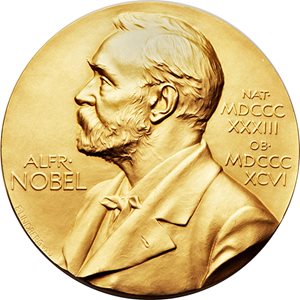This is the VOA Special English SCIENCE REPORT.
The Royal Swedish Academy of Sciences has announced the winners of the Nobel Prizes for physics and chemistry. The winners of each prize will share almost one-million dollars.
Two Americans and a German won the Nobel Prize in physics. They are Eric Cornell of the National Institutes of Standards and Technology in Boulder, Colorado and Carl Wieman of the University of Colorado in Boulder. The third winner, Wolfgang Ketterle, teaches at the Massachusetts Institute of Technology in Cambridge.
The award committee honored the men for creating a new form of matter. It is called Bose-Einstein condensate. The committee says Bose-Einstein condensate will lead to important changes in technology such as nanotechnology.
Nanotechnology deals with extremely small devices, some only the size of a few molecules. Experts say the discovery could be used to create extremely small computers or drugs that can target a single cell.
In Nineteen-Twenty-Four, Indian scientist S-N Bose developed a theory about light particles. He sent his work to the great physicist Albert Einstein. Einstein extended the theory to a kind of atom.
Einstein believed that if a gas of such atoms was cooled to a very low temperature, all the atoms would suddenly gather in the lowest possible state of energy. Matter that acts this way is called Bose-Einstein condensate.
Seventy years later, Professors Cornell and Wieman created this form of matter. Professor Ketterle worked independently. He produced a kind of simple laser beam that uses matter instead of light.
The Nobel Prize for chemistry also was awarded to three scientists. They are Ryoji Noyori of Nagoya University in Japan, and Americans William Knowles and K. Barry Sharpless. Mister Knowles did his research many years ago at Monsanto Company in Saint Louis, Missouri. Mister Sharpless is with the Scripps Research Institute in La Jolla, California.
The award committee honored the men for developing a process that led to the production of special molecules for use in making hundreds of important medicines. The process has been used to produce antibiotics and drugs to treat heart disease and Parkinson’s disease.
The six scientists will receive their prizes at a ceremony in Stockholm on December tenth.
This VOA Special English SCIENCE REPORT was written by George Grow.
